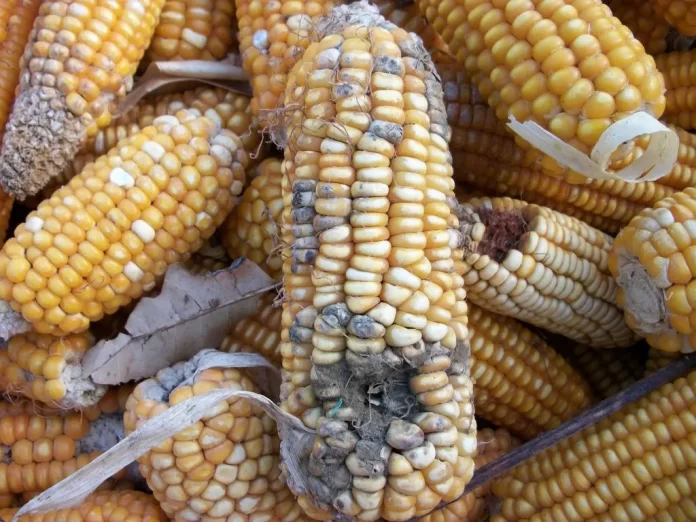In this post, we will look at the most critical components of maize post-harvest management and give useful information to farmers and stakeholders.
Maize, usually known as corn, is one of the world’s most essential staple crops. Maize, which is grown in a variety of temperatures and countries, is critical to food security and economic stability. However, numerous essential phases between harvesting maize and its eventual consumption impact production and quality leading to post-harvest losses.
Why is maize post-harvest management important?
1. Quality Preservation: After harvesting, effective post-harvest management ensures that maize preserves its quality and nutritional value. Proper handling, drying, and storing practices assist to minimize degradation, insect infestations, and fungal development, therefore preserving maize quality.
2. Reducing Losses: Maize is susceptible to a variety of spoilages, including mold development, insect infestations, and moisture-related damage. Implementing suitable post-harvest management measures, such as timely harvesting, efficient drying, and safe storage, aids in reducing losses and increasing the amount of maize available for consumption or sale.
3. Food Security: Maize is a staple crop in many places and is critical to food security. Post-harvest management measures that are effective assist to avoid losses and provide a consistent supply of maize throughout the year. This adds to consistent food availability, decreases reliance on imports, and helps communities satisfy their nutritional demands.
4. Economic Benefits: For many farmers, maize growing is a significant source of revenue. Farmers may optimize yields and sell more maize at higher prices by eliminating post-harvest losses. This results in higher profitability, revenue, and economic stability for farmers and their communities.
5. Market Access: Farmers may access a variety of markets with proper post-harvest management. High-quality maize that has been properly conserved and stored may fulfill the severe demands of both domestic and international markets. Farmers will be able to extend their consumer base, obtain higher pricing, and build long-term market partnerships as a result of this.
6. Sustainability: Effective post-harvest management helps to ensure the long-term viability of maize-producing systems. Farmers may maximize the use of resources such as land, water, and inputs by decreasing losses and waste, hence lowering their environmental effects. Sustainable practices also promote the long-term viability of maize farming for future generations.
Key Considerations in Maize Post-harvest Management
Harvesting
To guarantee optimal production and quality, maize should be harvested at the proper stage of maturity. Dry and brittle husks, dark silks, and firm, plump kernels are signs of ripeness. Harvesting too early might result in decreased yields while harvesting too late can result in excess moisture and susceptibility to pests and diseases. To maximize maize quality, precise timing is required.
Read also: Commercial Maize Production under No-till Technology: A Comprehensive Guide
Drying
Maize should be dried as soon as possible after harvesting to minimize moisture content. Mold development, aflatoxin contamination, and insect infestation can all be facilitated by high moisture levels. For storing, dry maize kernels to a safe moisture content of roughly 13-14%. Proper airflow, ventilation, and regular rotation of maize cobs are required to guarantee equal drying and prevent hotspot development.
Cleaning and Sorting
Impurities, damaged kernels, and foreign materials must be removed from the maize before storage. Sieves, winnowing, and mechanical separators can be used for cleaning. Sorting correctly helps to preserve quality and reduces the chance of contamination. Discard any kernels that are discolored or shriveled, since this may indicate mildew, illness, or insect damage.
Read also: How to Effectively Control 7 Insect Pests of Maize
Storage
Effective storage is critical for sustaining maize quality over long periods of time. Here are a few important storage considerations:
a. Storage containers: Select clean, moisture-proof, pest-resistant storage containers such as silos, bins, or bags. The PICS bag is highly recommended for maize storage.
b. Temperature Control: Keep maize in a cool place to reduce insect activity and fungal development. Ideally, temperatures should be kept below 15 degrees Celsius.
d. Pest Management: To avoid infestation, implement appropriate pest control techniques. This may involve the use of pesticides, the sealing of storage containers, or the use of biological control measures.
Quality Control
Inspect the quality of stored maize on a regular basis for signs of mold, bugs, or moisture damage. Temperature and moisture levels should be monitored for any changes that might threaten maize quality. Aflatoxin pollution should be sampled and tested on a regular basis since it poses a considerable health concern.
In summary
Maize post-harvest management is a critical phase in the agricultural value chain that significantly impacts yield, quality, and market value. Reduce post-harvest losses by improving good harvesting practices, drying techniques, cleaning, and sorting processes. Also, use effective storage methods to optimize maize quality and reduce losses. Good maize post-harvest management ultimately contributes to food security and increased income for farmers.


